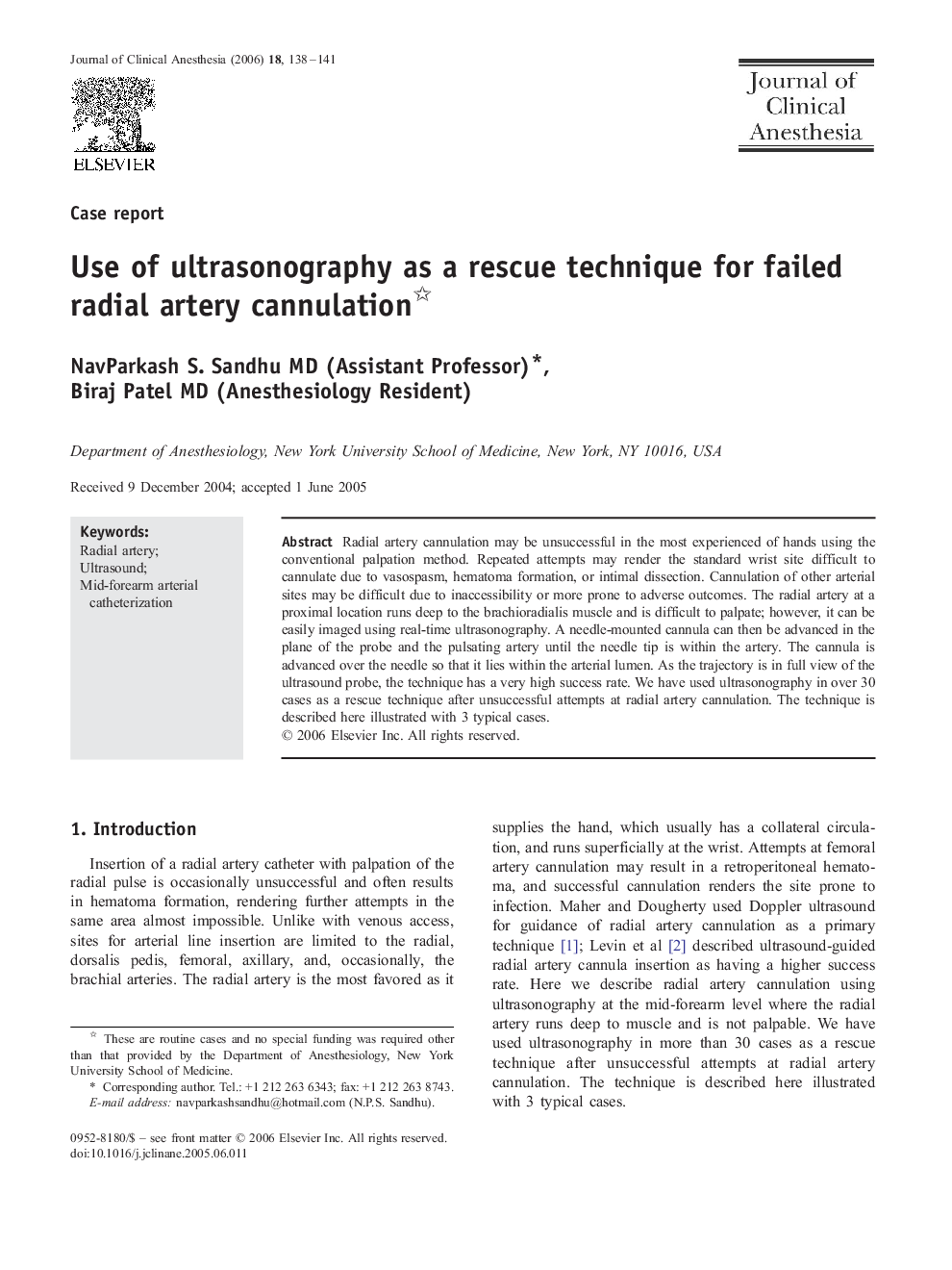| Article ID | Journal | Published Year | Pages | File Type |
|---|---|---|---|---|
| 2764002 | Journal of Clinical Anesthesia | 2006 | 4 Pages |
Radial artery cannulation may be unsuccessful in the most experienced of hands using the conventional palpation method. Repeated attempts may render the standard wrist site difficult to cannulate due to vasospasm, hematoma formation, or intimal dissection. Cannulation of other arterial sites may be difficult due to inaccessibility or more prone to adverse outcomes. The radial artery at a proximal location runs deep to the brachioradialis muscle and is difficult to palpate; however, it can be easily imaged using real-time ultrasonography. A needle-mounted cannula can then be advanced in the plane of the probe and the pulsating artery until the needle tip is within the artery. The cannula is advanced over the needle so that it lies within the arterial lumen. As the trajectory is in full view of the ultrasound probe, the technique has a very high success rate. We have used ultrasonography in over 30 cases as a rescue technique after unsuccessful attempts at radial artery cannulation. The technique is described here illustrated with 3 typical cases.
